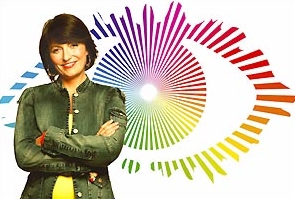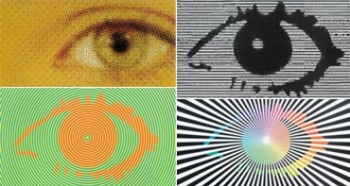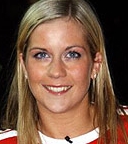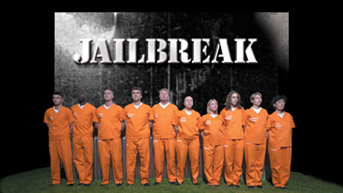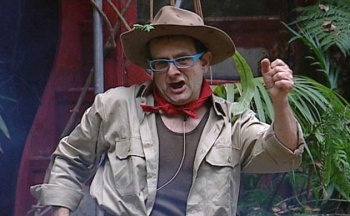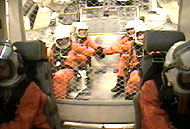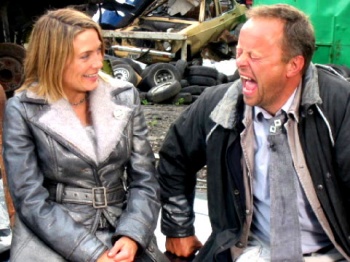Weaver's Week 2009-11-01
Last week | Weaver's Week Index | Next week
Contents |
Big Brother house, this is Davina
| Decades are arbitrary divisions, chopping up time into ten years. Political analysts argue that the 2000s didn't begin until September 2001, and were done by the end of 2008. Sometimes the natural life cycle of a phenomenon coincides with one of these ten-year blocks. In this part of the Week's review of the decade, we look at the life of self-contained reality television: shows that operate in their own little bubble.
14 July 2000 was a momentous day. Big Tobacco was routed after a jury ordered it to pay a twelve-figure sum to smokers. The Cabinet Office's website was hacked by cyberpests demanding cheap beer, low-price fuel, and competent system administrators. And at Three Mills studio in Bow, ten people went into a self-contained television studio set. They were participants in Big Brother (Channel 4, 2000-2010), a "social experiment" whereby people were put into a closed set, isolated from the outside world, and filmed going about their daily routine. Though there had been a flurry of press articles promoting the show, coverage swiftly died away. Nightly updates began the following Monday on Channel 4, in the experimental youth-oriented slot at 11pm. In the previous twelve months, that slot had launched Iain Lee and Ali G onto the world, so there was an expectation that something might happen. | [[Big Brother| |
| On set, the participants were getting to know each other, and splattering clay all over the walls, and speculating about how many people were, or weren't, watching. It turned out they were. Three million people were tuning in each night at the start of August, more were joining the show week-on-week. It was a successful Channel 4 show at any time of day, made more remarkable by the time of night. People were watching the show, people were talking about the show – Radio 1's Chris Moyles discussed very little else – but the mainstream press were reluctant to engage with the show, preferring to run knocking copy about how this was the Worst Programme Ever Ever in the history of Everness.
First evictee Sada Walkington sold her story to a Sunday tabloid for £25,000. Second evictee Andrew Davidson sold his tale to EMAP's struggling Heat magazine. Ordered to turn the general entertainment magazine into something people actually bought, new editor Boyd Hilton had gone for lots of articles about celebrities, and took a punt on the latest person out of this television set. It proved a success, and Heat would continue to enjoy a close relationship with Big Brother over the years. Caroline O'Shea made her way out, and the press coverage was turning increasingly positive. The dam broke on 17 August, when Nick Bateman's cheating was exposed. Viewing figures soared to 6 million, and stayed there. By the beginning of September, Big Brother's six episodes occupied the top six places on Channel 4's chart. Big Brother had arrived, and it wasn't going to go quickly. Historical revisionists – or at least those appearing in Endemol's various histories of the show – seem to claim that before Big Brother, there was no such thing as reality television, merely a wasteland of men in tweed jackets and women in puffball skirts. While the attire may be accurate, the claim about reality is not. The Real World (MTV, 1992 – present) had put a bunch of people in a house and filmed them, then edited down the mass of footage to a dozen hours of television. The BBC had run The Living Soap (BBC2, 1993-4), filming students and transmitting the footage in the same week. Though the show was too ambitious for its time, it was the first programme to demonstrate the feedback loop, of people seeing themselves on television and modifying their behaviour. | |
| Fly-on-the-wall documentaries became increasingly popular during the late 1990s – The Cruise (BBC1, 1998), The Hotel (ITV, 1997), The Airport (BBC1, 1996-2002), The Clampers (BBC1, 1998), The Fly-on-the-wall Documentary Makers (Channel 4, 1998) filled the hours of primetime like expanding foam filling an empty box. Most ambitious of all these was Castaway 2000 (BBC1, 2000-1), showing a group of people attempting to build a self-sustaining community on the remote island of Taransay. Like participants in The Real World, the 36 participants had been chosen with at least one eye on their combustability: putting polar opposites in the same environment could make for heated rows, and that makes for gripping, if voyeuristic, television.
Castaway 2000 had originally been planned to run as three shows in early 2000, and six at the start of 2001. Popular interest in the show forced the BBC's hand, and it would air additional blocks throughout the year – four or five hours in January, April, September, and even more at the end of the year. The show proved popular, thanks to incessant cross-promotion elsewhere on the BBC, and 10-minute shorts provided cheap and available filler when BBC1's schedules were recast in the autumn. More on Castaway 2000 at Off the Telly. Big Brother wasn't the first show of its kind. It hadn't invented television cameras everywhere, it wasn't the first UK show to isolate its participants from the rest of the world, it didn't even invent the Diary Room. Big Brother's great advantage was its ubiquity. It was a cornerstone of the schedules, it was on every single night of the week, it didn't take much effort to find the next programme. Because the show went out just after recording, it was possible to miss an episode and still remember the characters, though there was always the risk that the errant viewer might miss something important. | |
| After seizing the nation's attention through the "Nasty Nick" incident, Big Brother eclipsed Millionaire to become the hottest property on television. Everyone wanted a piece of the action. ITV tried to compete with Survivor (2001-2), but made two key blunders. First, the viewers had no stake in the outcome, they could just sit and watch and talk about the competitors on the burgeoning internet chatspaces. Second, the pace was terribly slow. The first half-hour of the series has to be one of the most poorly-directed segments it's been our misfortune to see. All of these flaws were corrected by the second series, but the programme had acquired a fatal reputation: Big Brother's dull cousin.
Other game shows followed the idea of isolating contestants from the rest of the world, and seeing how they interacted with each other. In its original version, Shipwrecked (Channel 4, 2000-2) was a documentary series a la Castaway 2000; its latter incarnation (Channel 4, 2006 – present) was an island-versus-island competition. Jailbreak (Channel 5, 2000) invited contestants to break out of a prison with the help of the audience; we'll discuss this show further in the final part of the series. For every observation programme with a cash prize, there were many with twists. For example, The Farm (Channel 5, 2004-5) took its contestants to a farm, and trained them to work with crops and animals. It's best remembered for Rebecca Loos's interaction with a pig. S4C's Fferm Ffactor (2009) does something similar, only without involving celebrities. For example, Shattered (Channel 4, 2004) asked its participants to live without much sleep for a week. Not only did this make for interesting television, it also provided a wealth of valuable scientific data and gently educated the public about psychological theories. For example, Hercules (BBC3, 2004) asked its competitors to complete amazing feats of strength and endurance, as did Last Man Standing (BBC3, 2007 – present). | |
| Like the shows it was spawning, Big Brother was constantly changing. A celebrity edition in 2001 promoted the year's Comic Relief appeal, and that summer's regular series stuck closely to the established format. The 2002 show featured a division into wealthy and poor sides: a simple idea that generated many editorial possibilities. There was no gimmick in 2003, and it's become accepted wisdom that series was "boring". We disagreed at the time, the reflective series gave a far greater insights into the participants than any year since, but there were far fewer loud arguments, and loud arguments make for voyeuristic television that gets people talking. Big Brother 2003 was perceived as dull, so dull is how it is remembered.
After the perceived failure of Survivor, ITV needed something else to show. The saviour turned out to be I'm a Celebrity... Get Me Out of Here! (2002 – present) Originally conceived as a cross between the exotic of Survivor and the fast edits of Big Brother, I'm a Celeb turned out to be a show with its tongue firmly in its cheek. Celebrities were asked to do demeaning things in exchange for meals for their camp. If they completed the tasks, they'd look silly on national television; if they didn't, they'd go hungry. It could be a recipe for nastiness, but Antan Dec's deft touch ensured the show remained relatively easy viewing for the whole family. The tension and fear of Survivor was replaced by "I can't believe they're doing that!", though once we'd seen half-a-dozen witchety grubs eating a D-list celeb, we'd seen them all. For our money, the Big Brother strain of reality television stopped being fun in early 2004, when Back to Reality (Channel 5) brought stars of reality television – both game shows and documentaries – into their own Not Big Brother At All set. That year's edition of Actual Big Brother took "Big Brother Gets Evil" as its theme, and almost came to a halt at the infamous fake eviction / re-entry / fight night. It survived, but not for long. | |
| An integral part of the Big Brother experience had been the unfiltered access to the set. Live streaming on the internet, and on the new E4 channel, allowed viewers to form their own views of the contestants, sometimes at variance to the nightly highlights shows. There is a preponderance of evidence suggesting that the producers have a series of characterisations they'd like to fill, and assign contestants to those slots according to reputation and evidence. There's always a tension between accurately representing someone and making watchable television, and the production teams tended not to let characters change easily.
The rot had set in as early as the third series; by 2004, it was clear that the producers were making television with at least one eye on the press coverage, and taking their eye from the basics, like fairness and being entertaining. Our patience with Big Brother finally snapped about two-thirds of the way through the 2004 series, when the producers re-wrote history to suit their own ends. Changing the copy on their website so that a task would give the result they wanted was a crude cheat, certain to be exposed within moments. Subsequent series of Big Brother have been increasingly ludicrous; many previously-loyal fans found their patience ran out with the vote-someone-back-in shenanigans towards the end of 2006's series. The whole idea of reality television was spoofed on Space Cadets (Channel 4, 2005), after which any new format has looked pointless. Indeed, after Space Cadets, Big Brother has been unable to generate much if any press attention. Such column inches as it has won owe more to failures by the production staff (see Goody v Shetty, 2007) than their deliberate actions. Channel 4 locked itself into an expensive contract for Big Brother, which won't be renewed when it expires next year. If this year's series is anything to go by, Big Brother is going to go out with a whimper. | |
| Shows seeking to promote relationships seemed to find the self-contained universe remarkably effective. Again, Big Brother led the headlines with Paul 'n' Helen, and Michelle 'n' Stuart, and more. Blind Date (ITV, 1984-2003) came to its end without a tremendous amount of lamentation from anyone. Celebrity Love Island (ITV, 2005-6) was the archetype for this phenomenon: take a dozen or so low-rent celebs, leave them on an island in the tropics, give them the chance to flutter their eyelashes at each other, and see what happens. Nothing much, an ennui shared by the viewers who turned off in their droves. Of greater artifice was Dating in the Dark (Living, 2009), bringing a whole new level of meaning to the term "blind date". Shows like The Bachelor (BBC3, 2003-5) and Dirty Cows (Living, 2007) tried to combine the romance with the evictions to very little effect; Paris Hilton's British Best Friend (ITV2, 2009) did away with the romantic angle but kept the pinkness. This particular format had its Space Cadets moment as early as 2002. In Mr Right (ITV), the seriously wealthy Lance Gerrard-Wright was fought over by a number of eligible spinsters, only to find that he hadn't so much fallen in love with the contestants as the host, Ulrika Jonsson.
One of the restrictions imposed upon Big Brother contestants is that they're stuck in the one small corner of London for months on end. The same went for the people on Castaway, and on I'm a Celeb, and on Celebrity Love Island, and other shows. Some self-contained universes weren't confined to a studio, and operated in the real world. Lost (Channel 4, 2001) and The Race (ITV2, 2001-2) both took pairs of young people and gave them a simple task: get from remote and inaccessible point A to large and obvious point B in as little time as possible, and filmed them as they went about their travels. The results were two very different shows: Lost changed most of its cast each week, and visited obscure locations on every continent except Oceania. The Race kept the same teams throughout, and tried to make the trips contiguous from A to B to C. Both Lost! and The Race were filmed in 2000-1, and travel restrictions imposed between filming and transmission have made follow-up series much harder to organise. Indeed, both titles have been re-used by other, lesser, productions. Travel returned with Coach Trip (C4, 2005 – present), a sort of Big Brother on the road; and with television's toughest test of its time The Search (C4, 2007). There will be more on the latter show in part five. | |
| And if the real world proves insufficient for your show, there's nothing stopping you from making your own one. Scrapheap Challenge (1999 – present) built all sorts of bizarre contraptions from pieces of rusty metal, slightly defunct engines, yoghurt pots and string. The show encouraged recycling, reuse, and seeing as much of Robert Llewellyn and Cathy Rogers or Lisa Roberts as is reasonably justifiable. It spawned a number of imitators, such as Geronimo! (BBC2, 2005) – host Dick Strawbridge took over from Llewellyn and Rogers when Scrapheap lost the heap in 2009. Design for Life (BBC2, 2009) took a similar starting position, but with radically different results.
The Bunker: Crisis Command – Could You Run the Country? (BBC2 and BBC4, 2004-5) took the real world, gave it a twist, and invited people to play at being in charge of a national emergency. Some of them rose to the occasion; others made some tasteful changes to Westminster's architecture albeit with an unfortunate aftersmell of kerosene. Though the execution wasn't to everyone's taste, the idea of slightly fictionalised worlds was sound, and returned with the more hands-on Crisis Control (CBBC, 2009 – present). For this column's money, the oddest self-contained universe of the decade was that of 24 Hour Quiz (ITV, 2004). Three players were put in a studio in London, and asked questions for 17 hours a day. Each afternoon, one of the players in the Quiz Pod would have to come out and meet Barry from Eastenders, and a challenger who wanted to take their place. The winner would go in and could win a few grand each day. Why? That's the 64 pound question. Shows set in their own little bubbles have risen and fallen during the decade. By 2007, Big Brother was clearly in decline – E4 was cutting back on its hours of live coverage, the internet feed was being phased out and abolished in 2009, the excellent Dermot O'Leary replaced by the excreble George Lamb, and viewing figures were going down. Channel 4's viewers didn't care for Big Brother. Why should they, the programme has always been part of the furniture for the 16-24 age group, who barely remember a time before it was on. Even though Big Brother dies in 2010 (the funeral's pencilled in for the first week of September), some of its spirit will live on. It's certain that there will be some new productions, some new formats, that will operate in isolation from the rest of the world. No show will be able to command the coverage and attention that Big Brother got. It was a show of its time and – by a coincidence of history – defined the 2000s better than any other programme. |
The next part, "Singing for Survival", will be published in two weeks.
University Challenge
Repechage 2: Christ's Cambidge v Emmanuel Cambridge
Before we get going, an apology would be nice. From our cable company, who had a bit of a fault on the line causing the picture to blank out for a second or two every few minutes during the show. Anyway, we'll press on.
Word of the Week is "device", and it's a good device to lead us into a first-and-last contest. Christ's College Cambridge lost the first match of the series on 6 July, defeated 200-170 by Warwick. Emmanuel fell to Regent's Park Oxford by 205-165 in the dim dark recesses of 12 October, a whole two weeks ago. No changes to the composition of the teams, just a very good buzz as Josh Scott contracts "surface action agent" to "surfactant" after a little dithering. We're impressed by the set of bonuses riffing on "eightfold", going from atomic theory to Buddhism in a moment.
Emmanuel do well on the Wordplay question, rhymes of European capital cities. The visual round is on the opening lines of novels written in the International Phonetic Alphabet, that well-known in-joke amongst linguists. Emmanuel leads 80-15, and extends that lead by knowing about edible insects, including the Witchetty Grub of I'm a Celeb fame. Thumper congratulates the side for " a remarkably good guess" of Auden, only to apologise after it turns out not to have been a guess at all.
The audio round is on composers of Nordic descent, and Emmanuel leads 145-25. Christ's come back with their third starter of the night to get the bonuses, but there's still a hundred-point gap to overcome, and it seems to be getting wider, helped by their knowledge of parts of grammar. We're not convinced that Emmanuel should have been docked five for a missignal when Thumper had finished the question, but even at this distance it's not going to alter the result materially. At this stage in the contest, a loss is terminal whatever the score.
The second visual round is on pictures of royalty, and Emmanuel leads by 180-75. Does no-one remember Norma Major? We can understand people forgetting her husband, most people have done by now... Emmanuel had the game wrapped up by half-time; though Christ's did make a brief resurgance in the early part of this last stanza, it was just too late. The Christ's side does know the original meaning of a Codex, before its modern definition (game show Channel 4 couldn't quite get right) was made. The gong goes during a set of bonuses about organisms living in extreme conditions. Emmanuel has won handsomely, 280-105.
Alex Guttenplan proved to be the night's best buzzer, we make it that he got nine starters correct as the side made 30/41 bonuses. As we said two weeks ago, when Emmanuel get to answer, they're really good. John Anderson was the best buzzer for Christ's, with three starters and neither of the side's missignals – Emmanuel were also debited with two missignals. Christ's bonus conversion rate was 9/21, and the overall rate (with eight dropped starters) was 60/91.
After the credits, we were informed of the death of Charles Blackham, who had been the captain of the Christ's team.
Next match: Girton Cambridge v St George's London
Mastermind
"Welcome to the toughest test on television," says our host Gordon Burns... who really isn't how we remembered him. Look, we love Mastermind, but it's not The Krypton Factor, it's not Only Connect, it's not Raven. It is the toughest quiz where the contestants are seated throughout.
Ian Speed has British Indie Music 1979-1989. Stiff, Factory, Postcard, Go!, Rough Trade, 4AD, Creation... the list goes on and on. Though commonly associated with doom-laden uncommercial guitar bands who moped into their shoes, the biggest indie album of 1989 was by Jason Donovan. No space for him, the round talks about Pop Will Eat Itself and Everything But the Girl and Ned's Atomic Dustbin. Though the contender passes on Kitchens of Distinction, he makes a score of distinction: 16 (1).
John Grasham is going to discuss the Life and Work of Leonhard Euler. Euler (1707 – 1783) was a prolific mathematician. So prolific that The Complete Works of Euler were published in referenced volumes from 1911; the series is still not complete. Euler did a lot of work on the theory of functions (put a number in, do something to it, get something else out) and complex numbers (those involving the square root of -1), and popularised the use of π, e, i, Σ, and f(x). The contender suggests that people won't be learning more about Euler after watching this show, an attitude we find so depressing that we'll recommend his biography in the Hitchhiker's Guide to the Galaxy. The final score is 9 (2).
Next is Frances Gregory, telling us all about the Short Stories of Graham Greene. Henry Graham Greene (1904 – 1991) was a novelist and journalist. He wrote contemporary novels dealing with themes of morality and religion, sometimes dropping into espionage. The contender is eager to answer, and does so sharply and crisply. And accurately: she also finishes on 16 (1).
Mike Court is going to whisk us away with Transatlantic Ocean Liners 1907-present. Ocean liners are ships that sail from port to port conveying goods and passengers. They were the main method of crossing the Atlantic from the early part of the 19th century until the 1960s, when jet aeroplanes started to become affordable; since then, they've been reserved for luxury travel. The year 1907 saw the first steam-ships on the route, the Lusitania and Mauretania. The contender has travelled the route over a hundred times, and his knowledge shows, ending on 14 (1).
John Grasham rejoins us, and recalls the Britannia yacht and an eagle in golf, and John Sergeant's tour on Strictly Come Dancing. The final score is 14 (7).
Mike Court remembers where the Tomb of the Unknown Soldier is in France, and the title of the memoirs of Laurie Lee. It's an excellent round, and the final score is a challenge for his successors: 28 (1).
- John Cooper 29 (3)
- Ian Scott Massie 26 (2)
- Les Morrell 26 (3)
- Colin Wilson 25 (0)
- William de Ath 25 (4)
- Frances Gregory 24 (2)
Ian Speed needs twelve to tie the lead, and remembers that Tower Bridge is a bascule, and the time Cleopatra asked Herod how he was doin', in that unique Cleopatra-channelling-Joey-from-Friends way. Sadly, a few incorrect answers mean that he's not going to win, and 24 (4) is the final score.
Frances Gregory requires eight to get in the repechage, twelve to tie for the lead. The question about types of quarks is a bit of a hoary old chestnut. We're impressed to see everyone's had a question tying in with Andrew Marr's series on the early 20th century, as seen just before this show by viewers in England. Again, it seems that the questions don't fall too kindly, and she ends up on 24 (2).
It's enough to put Frances Gregory onto the repechage board, though she'll be next week's target. Mike Court's excellent general knowledge round has put him through to the semi-finals.
This Week And Next
The nominations for the BAFTA Children's Awards have been released. Game show nominations are Richard Hammond (Best Presenter, for his eponymous Blast Lab), Election (Entertainment), and the sort-of-a-game-show if you squint enough Bratz Design Academy (also Entertainment – the show aired on Nickelodeon). The decidedly non-game Legend of Dick and Dom is also up in the Entertainment category.
Ratings for the week to 18 October show new peaks for Simon Cowell Annoys (13.9m) and Family Fortunes (6.65m), with Strictly holding at 8.45m. HIGNFY returned with 5.75m for the Friday showing, 2.3m on Saturday. Masterchef The Professionals bowed out with 3.7m, and Never Mind the Buzzcocks improved to 2.5m.
Amongst digital channels, More Annoyance on ITV2 had 1.755m viewers, fully an eighth of those seeing the main show. Come Dine With Me had 1.065m, and America's Next Top Model moves up into third, with 460,000. Dave's audiences have fallen in the year since it went free-to-view, 380,000 seeing an hour-long QI. Over on BBC-HD, 105,000 people are meant to be seeing Hole in the Wall at midnight on Monday night. Bring on the incredible statistic!
It's Young Choristers of the Year weekend, with the final going out on Radio 2 tonight (8pm). Dickinson's Real Deal (2pm) and Golden Balls (5pm) come back to ITV's weekdays, and there's a new run of Bwrw'r Bar (S4C 9.30 Friday). Highlight of the week is in BBC2's Wonderland series of observational documentaries: I Won University Challenge does what it says on the tin (BBC2 9.45 Thursday). Your Saturday night shows: Strictly 6.25 – 8.15, coming live from Blackpool; Cowell 8pm – 9.35, with the theme to be announced.

